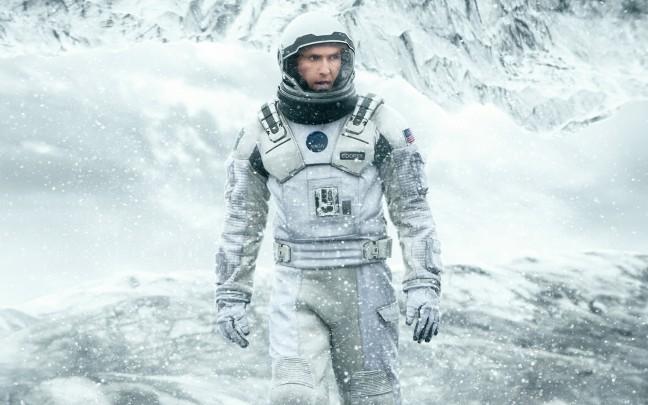Christopher Nolan’s movies seem to have a few hallmark characteristics. He is a fan of mind-bending landscapes, from the dark towers of Gotham to the impossible landscape/sky meld in “Inception.” He favors longer films that ask the audience to suspend its beliefs and scientific knowledge. He likes plots that circle back on themselves – see “The Prestige.” He likes to bend the mind slowly until – snap! – it all makes sense. Plot twists abound in “Inception,” “Memento,” “The Prestige” and even “The Dark Knight Rises.” All of these elements come together in his latest and most ambitious film, “Interstellar.”
“Interstellar” may have these qualities, but it doesn’t repeat old ideas. It has a unique take on Nolan’s theme of blending the past with the future. It opens with a flashback, followed by documentary interviews about a Dust Bowl-like event, before launching the viewer into a not-quite-apocalyptic time in the future that seems to be a blend of the ’30s and the ’90s. Corn is everywhere and flannel is prevalent, but random pieces of futuristic technology are also thrown into the mix. In this sense, “Interstellar” feels a bit like movies from the 1980s that tried to imagine what the 21st century would be like. The world of “Interstellar” blames the overconsumption of our current era and adds in elements of Cold War conspiracy and government coverups.
The strongest aspect of “Interstellar” is the relationships between its characters. The connection between Matthew McConaughey (“Dallas Buyers Club”) and his daughter is sweet, but also heartbreaking. Despite the unconventional way their lives play out, this life-long relationship between father and daughter is a recognizable and authentic dynamic. The father-daughter dynamic between Anne Hathaway (“Rio 2”) and Michael Caine (“The Dark Knight Rises”) may have less screen time, but it’s just as strong. Despite these well-established relationships, father-son dynamics do not offer the same realization or depth. They are often one-note and based on flat characters that serve primarily as a means of developing McConaughey’s character.
Part of the film’s genius lies in its resistance against traditional Hollywood formulas. The film focuses on familial relationships above anything else; there is a moment when McConaughey and Hathaway seem destined to fall in love, but the film wisely avoids this conclusion. It’d be hard to believe that four people on a spacecraft, all finding themselves closer and closer to death, would under any circumstances fall in love with each other. Nolan knows better than to allow this.
As expected, “Interstellar” is visually stunning. The budget serves the filmmakers well; everything from space to spacecraft to the fourth or fifth dimension is beautifully rendered. The music, which is sparse and instrumental, resembles the music of Philip Glass and is extremely effective in increasing tension. It’s the kind of film worth seeing in theaters because the visuals are so stunning it seems a waste to view them on a small computer or television screen.
It’s still hard to justify, setting aside, three hours for a film that could have been done just as well in two, but the emotional and visual appeals of the film are enough to overshadow any flaws. “Interstellar” is one of the most emotionally-wrenching films in years. It’s textbook Christopher Nolan, but it’s also one of his best films yet.


